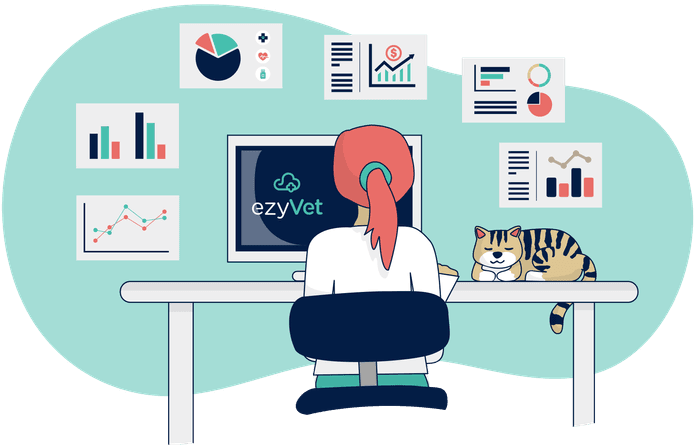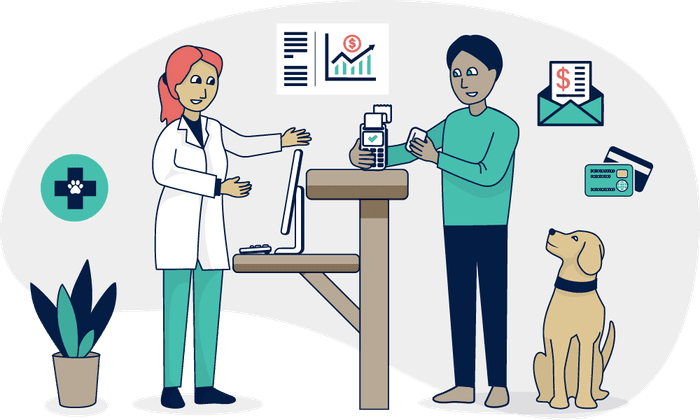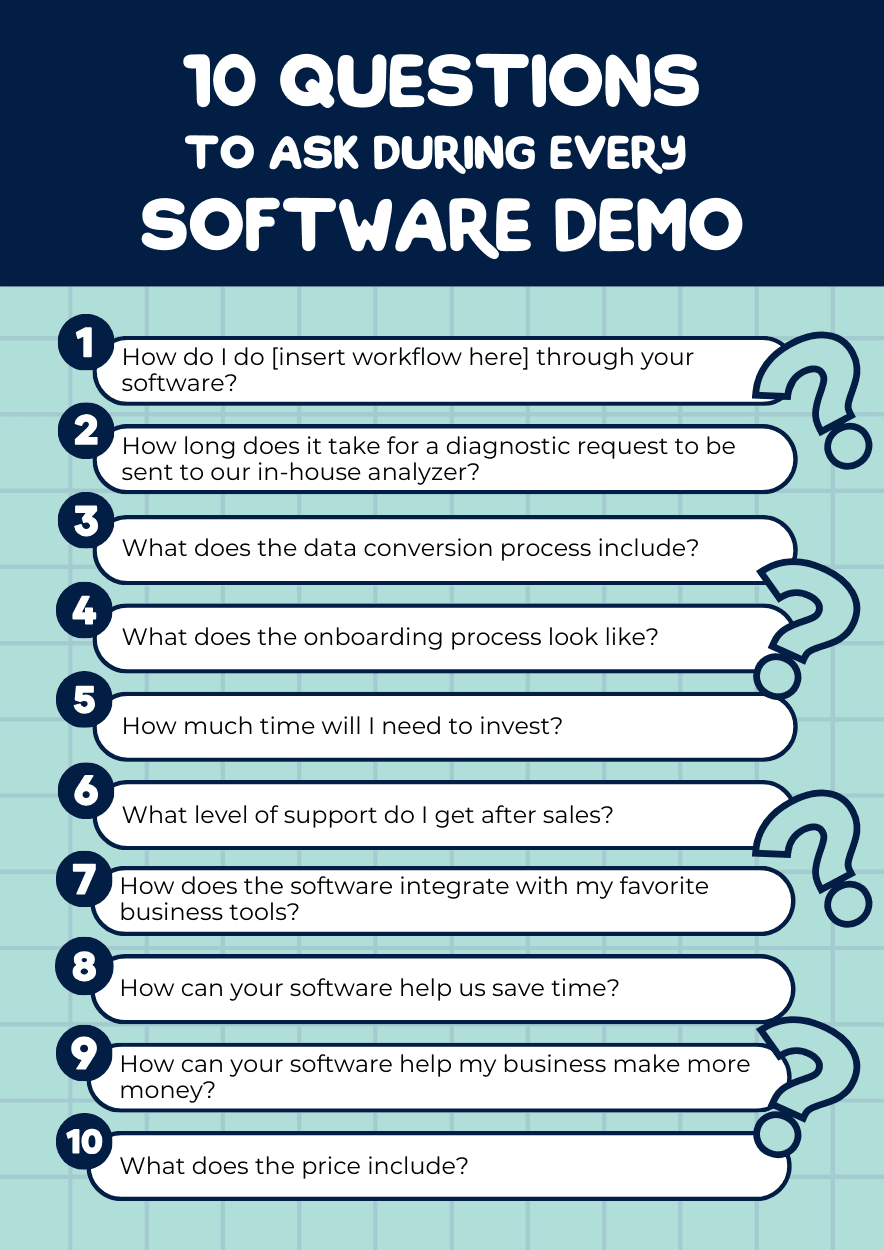What is the cloud?
The term "cloud" in the context of technology refers to cloud computing, which is a model for delivering and accessing computing resources over the internet.
When something is stored, managed, or processed in the cloud, it simply means that it’s happening on an internet-connected server rather than locally on your device or an on-premises server. This provides several advantages, including scalability, flexibility, cost-effectiveness, and the ability to access resources from virtually anywhere with an internet connection.
Cloud services come in all shapes and sizes, from basic data storage and networking solutions, to complex machine learning and artificial intelligence applications. Some common examples of cloud services you’ve probably encountered include Gmail, Microsoft Office 365, and Slack.
The cloud represents a paradigm shift in the way computing resources are provisioned and accessed. Today, only about 25% of veterinary practices use cloud-based practice management software to power their businesses. But that number is rapidly rising as more practices discover the game-changing potential of cloud technology.
How does the cloud work?
Cloud-based software, also known as Software-as-a-Service (SaaS), is a software delivery model where the software is hosted by a third-party provider and accessed by users over the internet. Unlike traditional software that you install on your computer or server, cloud-based software runs on servers managed by a third-party provider.
- The software provider hosts the software on their servers, which are accessible via the internet.
- Users access the software through a web browser or a mobile app, using their login credentials.
- The software provider takes care of all the maintenance, updates, and security of the software, so users don't have to worry about any of that.
- Users can access the software from anywhere with an internet connection, using any device that supports the software.
- The software provider charges users a subscription fee, usually on a monthly or annual basis, based on the number of users and the features they need.
What are the benefits of the cloud?
For practice managers and owners considering the leap, the cloud offers unprecedented flexibility, accessibility, and efficiency in managing veterinary practices. With real-time collaboration, enhanced data security, and streamlined workflows, the cloud empowers veterinary teams to deliver top-notch patient care while optimizing the overall efficiency of your practice. Below are some of the key benefits of investing in the cloud.
1. Real-time access to your practice management software
One of the key advantages of the cloud is accessibility. Cloud veterinary software puts all of your practice’s data at your fingertips, enabling you and your team to access the system from any device with an Internet connection, including laptops, tablets, and smartphones.
This is particularly useful for practices with multiple locations, as it allows everyone to access the same system and share data in real-time. It also opens up all sorts of remote work opportunities, providing you with the flexibility to manage your practice, access patient information, and carry out administrative tasks from wherever life takes you.
The result? A more versatile solution, happier staff, and greater continuity of care across the practice.
2. Reduced deployment and maintenance costs
There are significant costs associated with traditional on-premises practice management systems. In addition to the steep initial setup costs - the cost of a server-based hardware environment for a new clinic is typically around $20,000-$30,000 - there are also ongoing expenses to consider. Often, you’ll need to work with an external IT services provider to perform maintenance or roll out system upgrades.
Cloud vet clinic software is typically much more cost-effective, both in the short and long term. Unlike server-based systems, cloud-based veterinary practice management solutions require no significant upfront hardware investment as the provider is responsible for deployment, maintenance, and upgrade costs. Most cloud veterinary solutions use a subscription model, which makes it easy to predict operational costs and budget accordingly.
3. Seamless scalability as your practice grows
Your tech needs change as your business grows. A system that might be a good fit today might not be suitable for your veterinary practice a few years down the track.
With cloud-based vet software, you don’t have to spend hours (or even days!) overhauling your infrastructure as you would with a traditional server-based system. Instead, cloud veterinary software uses third-party cloud providers like Amazon Web Services to supply IT resources on demand, allowing you to effortlessly scale up your operations as needed.
Whether you’re starting a new clinic, adding more users, or expanding to an additional site, cloud veterinary software grows seamlessly with your practice, making it an ideal option for aspiring clinics with future expansion plans.
4. Automatic updates minimize downtime
Software companies regularly release updates (at least, they should!) to make their products better. That’s a good thing, of course, but implementing these updates can be tricky in a time-sensitive vertical like the veterinary space, where any downtime can potentially impact patient health.
Whereas server-based systems typically require you to manually install the latest patches, cloud veterinary software offers automatic upgrades that are carefully designed to minimize disruption and keep your business ticking over smoothly. This ensures that your practice always has access to the latest features and quality-of-life upgrades without interfering with your usual day-to-day processes.
5. Backups ensure maximum business continuity
A robust backup system is a must when you’re dealing with large volumes of sensitive data. If something goes horribly wrong (say, system failure, malware infection, or a natural disaster), you can safely revert your system to its former state, hopefully with minimal disruption to your day-to-day processes.
Cloud-based veterinary software excels in this regard. Backups are generated automatically on a regular basis and stored off-site, which reduces the risk of large-scale data loss. In addition, the distributed nature of cloud-based resources means that even if one server goes down, you probably won’t notice a thing. Your data will still be safe and you’ll still be able to access your software.
6. Advanced data security
A common misconception is that moving to the cloud could jeopardize data security. On the surface, these concerns are understandable - after all, if your practice management system is Internet-based, it stands to reason that your information would be more vulnerable to cyberattacks than it would on your own local devices and servers.
In reality, cloud-based veterinary software tends to be more secure than on-premises solutions. Cybersecurity is complex and ever-evolving, and most businesses will struggle to stay one step ahead of today’s sophisticated threats. Cloud-based software providers take responsibility for security management, using a range of powerful technologies to comply with widely accepted security standards and mitigate the risk of data compromise.
ezyVet stores your data in the Amazon AWS cloud. The service is so secure that it’s trusted by some of the biggest organizations in the world, including banks, NASA, the US government, and a whole lot more.







